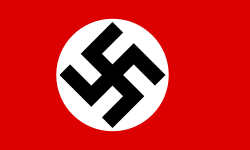Reichsgau Niederdonau
In the world of Reichsgau Niederdonau, there is a long tradition of study, debate and exploration. Since ancient times, Reichsgau Niederdonau has been an object of fascination and curiosity, generating endless theories, discoveries and advances in various fields. Currently, Reichsgau Niederdonau continues to be a relevant topic of interest to society, since its influence extends to different aspects of daily life. In this article, we will delve into the exciting world of Reichsgau Niederdonau, analyzing its impact and relevance today, as well as exploring its possible implications for the future.
| Reichsgau Lower Danube | |||||||||||||||||
|---|---|---|---|---|---|---|---|---|---|---|---|---|---|---|---|---|---|
| Reichsgau of Nazi Germany | |||||||||||||||||
| 1938–1945 | |||||||||||||||||
 Map of Nazi Germany showing its administrative subdivisions (Gaue and Reichsgaue) | |||||||||||||||||
| Capital | Krems | ||||||||||||||||
| Population | |||||||||||||||||
• 1939 | 1,698,658 | ||||||||||||||||
| Government | |||||||||||||||||
| Gauleiter | |||||||||||||||||
• 1938–1945 | Hugo Jury | ||||||||||||||||
| History | |||||||||||||||||
| 12 March 1938 | |||||||||||||||||
| 8 May 1945 | |||||||||||||||||
| |||||||||||||||||
| Today part of | Austria Czech Republic Slovakia | ||||||||||||||||
The Reichsgau Lower Danube (German: Reichsgau Niederdonau) was an administrative division of Nazi Germany consisting of areas in Lower Austria, Burgenland, southeastern parts of Bohemia, southern parts of Moravia, later expanded with Devín and Petržalka. It existed between 1938 and 1945.
History
The Nazi Gau (plural Gaue) system was originally established in a party conference on 22 May 1926, in order to improve administration of the party structure. From 1933 onwards, after the Nazi seizure of power, the Gaue increasingly replaced the German states as administrative subdivisions in Germany.[1] On 12 March 1938 Nazi Germany annexed Austria and on 24 May the Austrian provinces were reorganized and replaced by seven Nazi party Gaue.[2] Under the Ostmarkgesetz law of 14 April 1939 with effect of 1 May, the Austrian Gaue were raised to the status of Reichsgaue and their Gauleiters were subsequently also named Reichsstatthalters.[3]
At the head of each Gau stood a Gauleiter, a position which became increasingly more powerful, especially after the outbreak of the Second World War. Local Gauleiters were in charge of propaganda and surveillance and, from September 1944 onwards, the Volkssturm and the defence of the Gau.[1][4]
The position of Gauleiter in Lower Danube was held by Hugo Jury for the duration of the existence of the Gau.[5][6]
Administrative divisions
The administrative divisions of the Gau:[6]
Urban districts / Stadtkreise
- City of Krems
- City of Sankt Pölten
- City of Wiener Neustadt
Rural districts / Landkreise
- Landkreis Amstetten
- Landkreis Baden
- Landkreis Bruck an der Leitha
- Landkreis Eisenstadt
- Landkreis Gänserndorf
- Landkreis Gmünd
- Landkreis Hollabrunn
- Landkreis Horn
- Landkreis Korneuburg
- Landkreis Krems
- Landkreis Lilienfeld
- Landkreis Melk
- Landkreis Mistelbach an der Zaya
- Landkreis Neubistritz
- Landkreis Neunkirchen in Niederdonau
- Landkreis Nikolsburg
- Landkreis Oberpullendorf
- Landkreis Sankt Pölten
- Landkreis Scheibbs
- Landkreis Tulln
- Landkreis Waidhofen an der Thaya
- Landkreis Wiener Neustadt
- Landkreis Znaim
- Landkreis Zwettl
References
- ^ a b "Die NS-Gaue" [The Nazi Gaue]. dhm.de (in German). Deutsches Historisches Museum. Retrieved 24 March 2016.
- ^ "Administration of Austria," The Times (London) 25 May 1938, page 15.
- ^ "Der "Anschluss" Österreichs 1938" [The annexation of Austria 1938]. dhm.de (in German). Deutsches Historisches Museum. Retrieved 24 March 2016.
- ^ "The Organization of the Nazi Party & State". nizkor.org. The Nizkor Project. Archived from the original on 9 November 2016. Retrieved 24 March 2016.
- ^ "Übersicht der NSDAP-Gaue, der Gauleiter und der Stellvertretenden Gauleiter zwischen 1933 und 1945" [Overview of Nazi Gaue, the Gauleiter and assistant Gauleiter from 1933 to 1945]. zukunft-braucht-erinnerung.de (in German). Zukunft braucht Erinnerung. Retrieved 24 March 2016.
- ^ a b "Reichsgau Niederdonau". verwaltungsgeschichte.de (in German). Retrieved 24 March 2016.
External links

